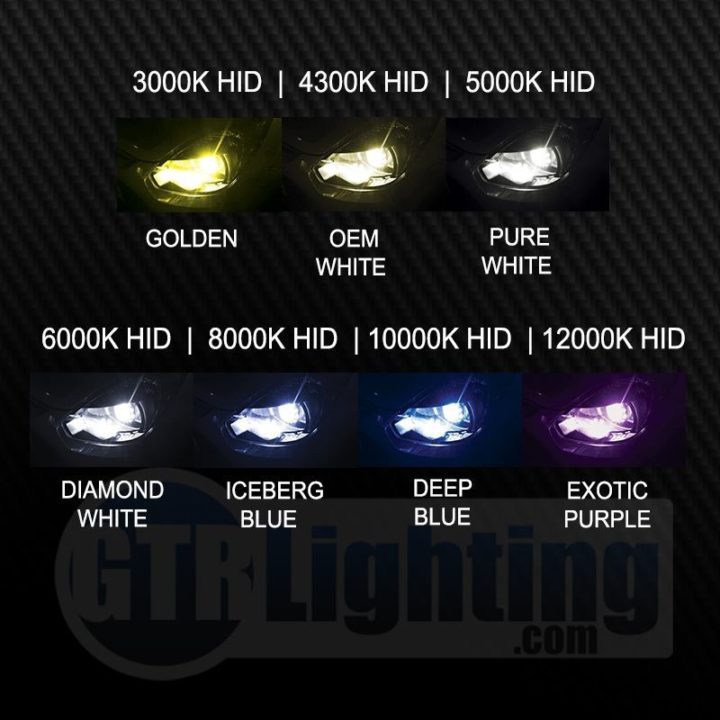If you’re new to the aftermarket lighting world you’re probably wondering why all of the colors are abbreviated with a “K” symbol at the end (e.g. 3,000K… 8,000K). And why are the colors rated as numbers, does the higher number make the bulb brighter? The “K” stands for Kelvin, and it’s a complex idea that comes from a 1900’s idea about the ideal temperature to heat a tungsten light bulb. This is what we mean when we talk about color temperature, it’s the color of white that would correlate with a color of light of a theoretical black body at a particular temperature, as described by Planck’s Law. Watch the video below for more details.
Regardless if you’re using halogen, LED or HID bulbs, you’ll be rating the color of the light the same.

You would think that as the number K goes up you also increase brightness, but this is not the case. It’s actually a pretty counter-intuitive system of measurement because the color has nothing to do with the brightness.
BRIGHTNESS:
To put colors in terms of brightness, think about the color spectrum as a mountain peak where 4,300K is at the top, producing the most visible light. Then as you deviate in either direction away from 4,300K you lose light. It’s not that the colors actually produce less light, but the further you get into infrared or ultraviolet spectrums the less energy the human eye can detect. That’s why if you look directly into a 10,000K blue headlight (don’t do this…) it will hurt and damage just the same as if you looked into a 5,000k light. But since the human eye cannot see blue as well as it can yellow, we perceive it as being dimmer.
COLOR:
If you buy a light bulb at the store for your house, a common color choice you’ll see is “Daylight” which actually doesn’t make any sense. To be more accurate that bluish-white color should be called “Atmosphere”. The sun is actually around the 3,500 – 4,500K range in color, whereas these “Daylight” colored bulbs are around 6,000K which is significantly more blue. The sky/atmosphere is blue looking because of light refraction through the atmosphere but the sun itself, and the actual color of daylight is much more yellow and warmer.
Wattage:
A lot of people get the color temperature (e.g. 5,000K) confused with the wattage (e.g. 35w) and how they relate to brightness.
Here is a quick rule of thumb:
The wattage of the bulbs has to do with how much power they consume, not how bright they are. It’s totally possible to have a bulb that draws 80 watts of power (80w) producing less lumen (brightness) than a bulb that only draws 25 watts (25w) of power. This is because wattage draw is not a universal measurement of light output, but rather efficiency and technology. Generally speaking a 55w HID kit will be brighter than a 35w HID kit. And generally speaking, an 80w halogen bulb will be brighter than a 55w halogen bulb. But in the LED world you could have a 25w LED bulb be twice as bright as a 40w LED bulb. The wattage has nothing to do with the color.
If you want to get more in depth into the science of color temperature we recommend this video for further education:







.png?width=300&height=87&name=logo%20(1).png)